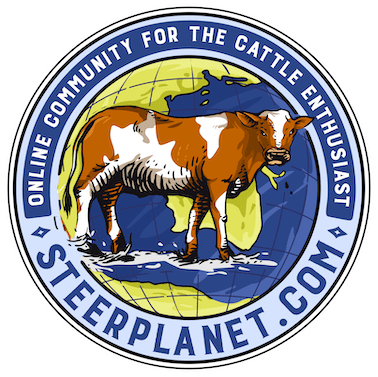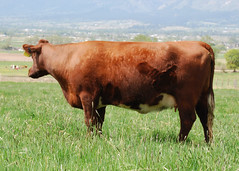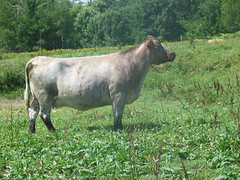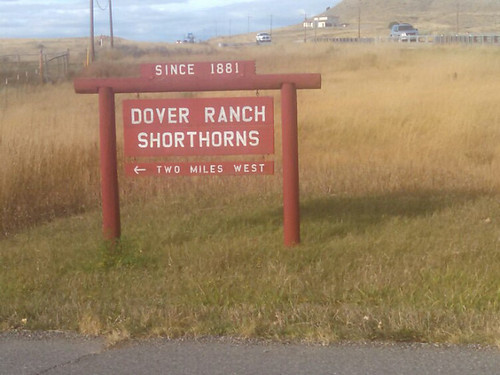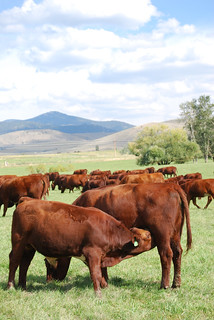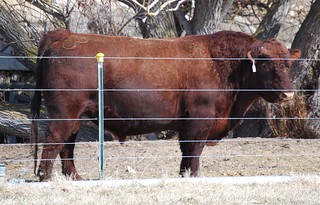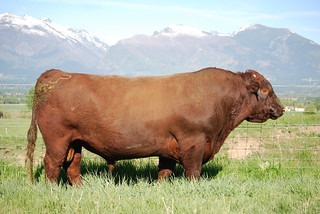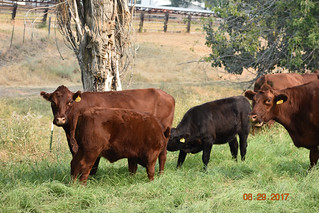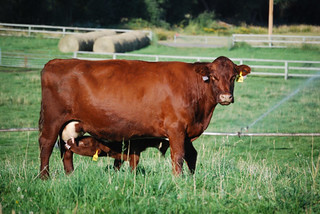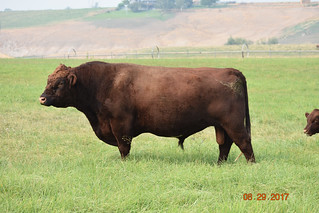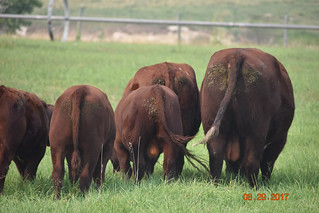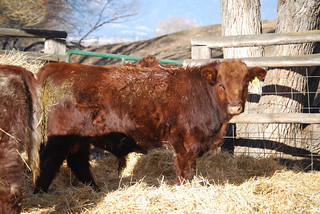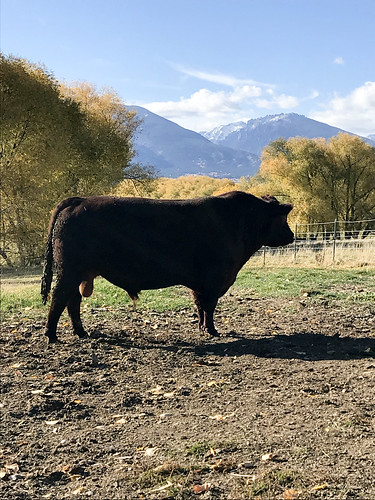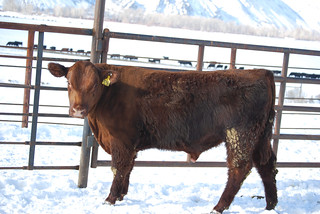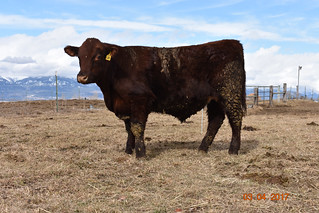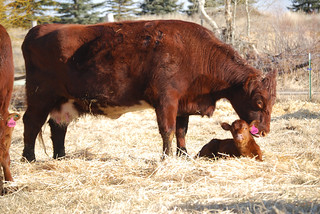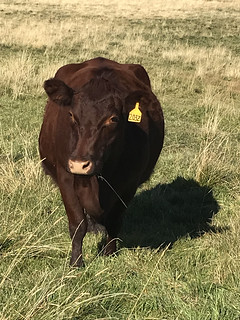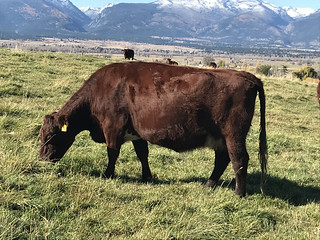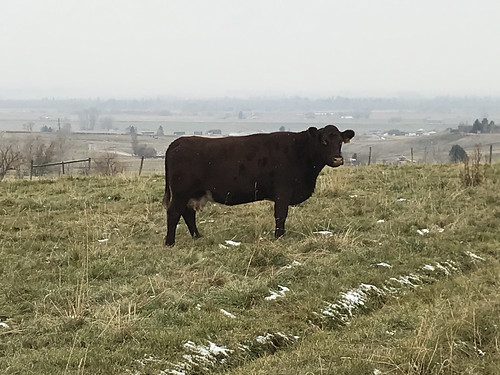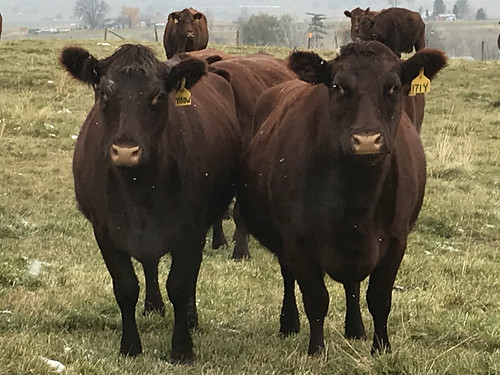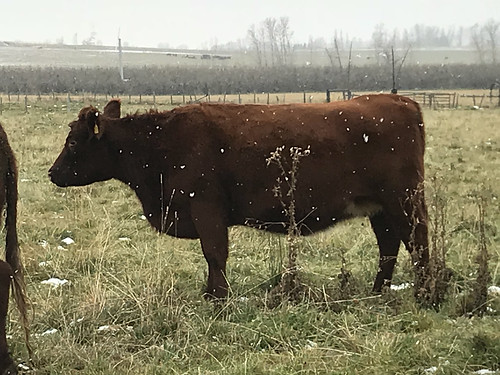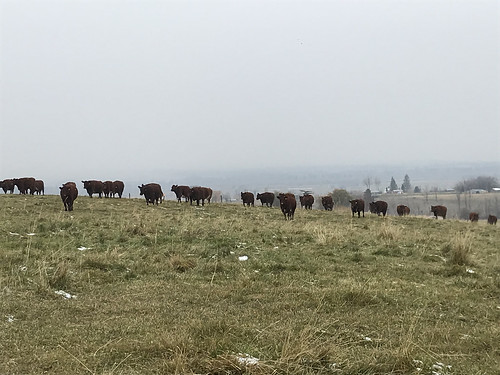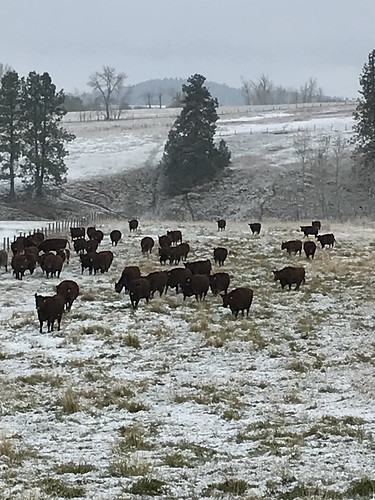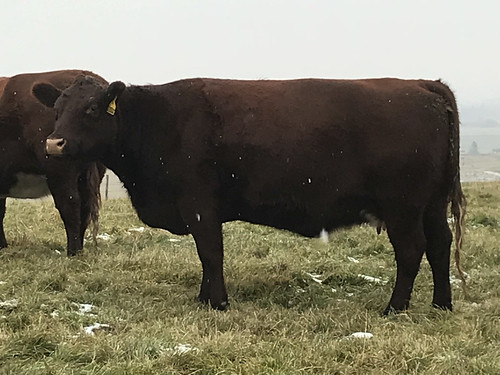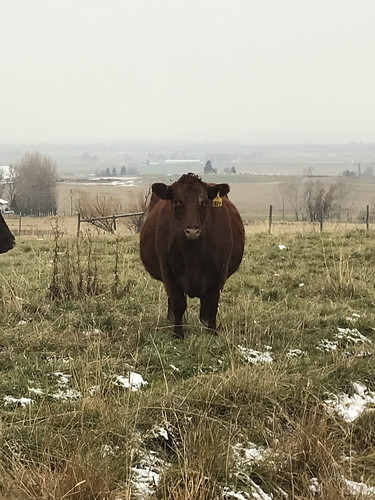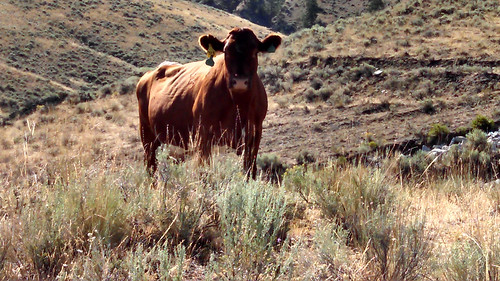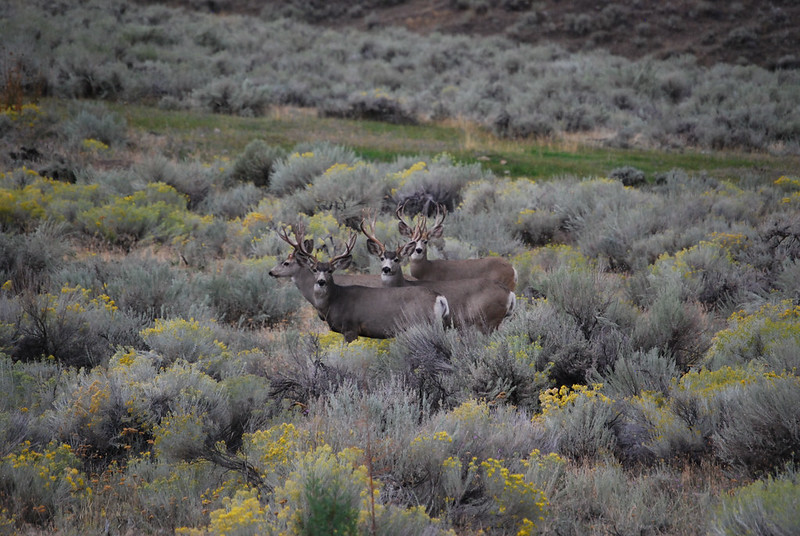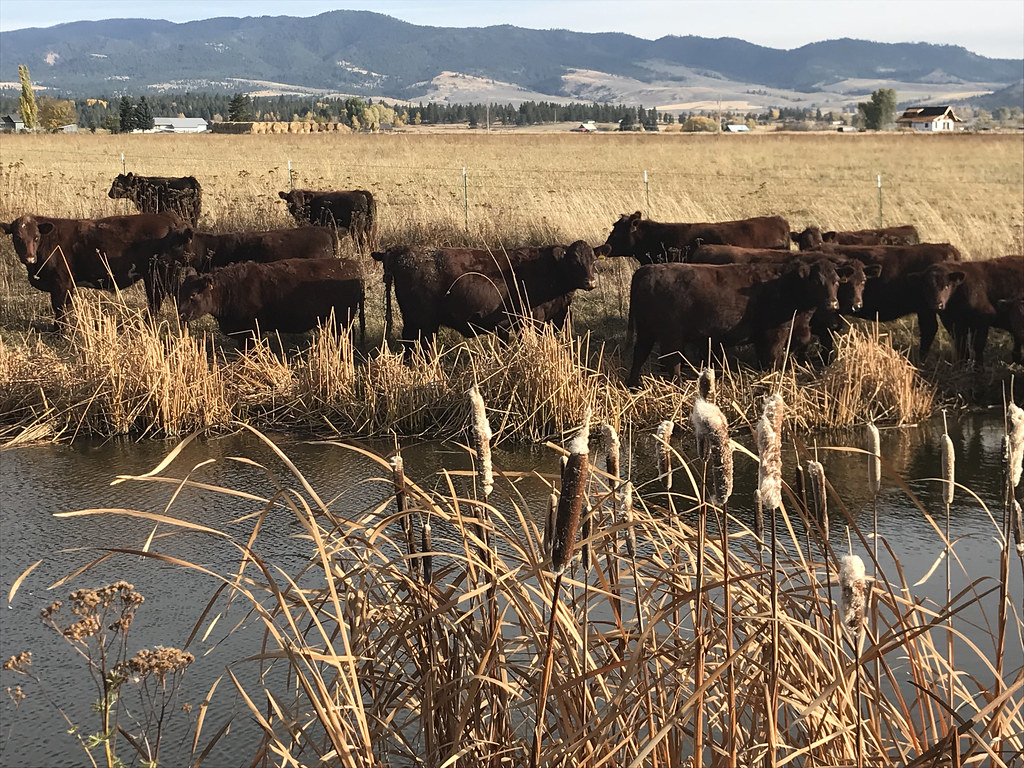I think there is quite a lot of misunderstanding as to what having a “maternal” herd means. Too many of us strive to have one type of bovine that “does it all”. All breeds have an abundance of practitioners of this philosophy. If you are so afflicted, most likely nothing you read here will matter.
Since the author of these thoughts is smack dab in the middle of his 7th earthly decade, and he constitutes the one-man crew responsible for irrigating, haying, feeding, calving, etc., simplification of the operation became a necessity. Especially as the kids embarked to get a good education that will allow them to “ranch in style” should they someday decide to return to their roots?
I’ve never been the sharpest knife in the drawer, however- I do possess a certain affinity with mules. This trait has served me well in building a herd of Commercial type Registered Shorthorns. It’s taken a lot of trial and error. It’s taken a lot of time learning to “see” rather than merely “look”. This has been especially true for me when it comes to the bull type most likely to produce really good females. I will post pictures of our herd bull type as yearlings and as mature bulls later.
I won’t repeat the story of the old Shorthorn cow my folks acquired when I was a kid, but she is the reason I decided on this breed some 20 plus years ago. That and the fact that I wanted to prove that good cattle can still be found outside “The Business Breed”. So, with great expectations I set out to build a herd of the type I remembered as a kid.
I would buy a group of nice looking heifers, only to have them develop into generally nice looking cows that seemed to want to put more effort into their own well-being than that of their calf. Few met my expectations when it came to possessing the qualities for commercial type cattle production. In the West, much of the land is unfit for the plow, so it’s up to the cow.
In a lot of the country, a “commercial” type bovine must be have strong, sound, feet/legs, as it can be a ways between a water hole and the next blade of grass. She has to have a quality udder with small enough teats for a calf to find on its own. She must give birth unattended. She needs strong maternal instinct; her slimy, wet, new baby is the most important thing in her life and will remain so for the next 7 months. She must be able to produce enough milk under often time’s marginal conditions to wean a good calf. Most importantly, she must be very fertile. AND-- it’s a huge plus when a range cow has the ability to discern the difference between a coyote and a human being when it comes to weighing, tagging, and tattooing her newborn. In general, docility is common in this breed and is certainly a favorable trait to have built in. I’m certain that I no longer have the physique or the inclination to engage in serious foot races.
Here is a link to a video showing a random view of a decent portion of the cows. I took this with my iPhone 3 days after hauling the calves’ home. These girls range in age from 2 to 12 years. I'm very pleased to say that you won't find an unacceptable udder in the bunch. You can't tell in the video, but there are no bad feet either.
https://youtu.be/QQbfYDoUVJU
As pictured these cows are on hay stubble pasture, where they’re allowed to graze the regrowth. I’ve leased this place for grazing for the past several years and it’s been good. The cattle are on mostly native type range for the majority of the summer. After the haying season, they’re run on the stubble to graze the regrowth until weaning. The calves really “boom”, and then the cows go back on the native pasture a few days after weaning. It’s been a great proving ground for how properly selected Shorthorns can perform under conditions that are comparable to most beef operations in this part of the world.
Unfortunately at this point, the 50+ year old fences are falling down. Much of this is due to age. However, a herd of much darker complexioned cows next door have a real desire to sample feed across the fence. The landowner wants me to replace these fences without granting a long term lease or adjusting the annual price of the grazing to do so. A 10 year lease would make it a viable option, but they don’t see it my way and I don’t see it theirs.
Since the author of these thoughts is smack dab in the middle of his 7th earthly decade, and he constitutes the one-man crew responsible for irrigating, haying, feeding, calving, etc., simplification of the operation became a necessity. Especially as the kids embarked to get a good education that will allow them to “ranch in style” should they someday decide to return to their roots?
I’ve never been the sharpest knife in the drawer, however- I do possess a certain affinity with mules. This trait has served me well in building a herd of Commercial type Registered Shorthorns. It’s taken a lot of trial and error. It’s taken a lot of time learning to “see” rather than merely “look”. This has been especially true for me when it comes to the bull type most likely to produce really good females. I will post pictures of our herd bull type as yearlings and as mature bulls later.
I won’t repeat the story of the old Shorthorn cow my folks acquired when I was a kid, but she is the reason I decided on this breed some 20 plus years ago. That and the fact that I wanted to prove that good cattle can still be found outside “The Business Breed”. So, with great expectations I set out to build a herd of the type I remembered as a kid.
I would buy a group of nice looking heifers, only to have them develop into generally nice looking cows that seemed to want to put more effort into their own well-being than that of their calf. Few met my expectations when it came to possessing the qualities for commercial type cattle production. In the West, much of the land is unfit for the plow, so it’s up to the cow.
In a lot of the country, a “commercial” type bovine must be have strong, sound, feet/legs, as it can be a ways between a water hole and the next blade of grass. She has to have a quality udder with small enough teats for a calf to find on its own. She must give birth unattended. She needs strong maternal instinct; her slimy, wet, new baby is the most important thing in her life and will remain so for the next 7 months. She must be able to produce enough milk under often time’s marginal conditions to wean a good calf. Most importantly, she must be very fertile. AND-- it’s a huge plus when a range cow has the ability to discern the difference between a coyote and a human being when it comes to weighing, tagging, and tattooing her newborn. In general, docility is common in this breed and is certainly a favorable trait to have built in. I’m certain that I no longer have the physique or the inclination to engage in serious foot races.
Here is a link to a video showing a random view of a decent portion of the cows. I took this with my iPhone 3 days after hauling the calves’ home. These girls range in age from 2 to 12 years. I'm very pleased to say that you won't find an unacceptable udder in the bunch. You can't tell in the video, but there are no bad feet either.
https://youtu.be/QQbfYDoUVJU
As pictured these cows are on hay stubble pasture, where they’re allowed to graze the regrowth. I’ve leased this place for grazing for the past several years and it’s been good. The cattle are on mostly native type range for the majority of the summer. After the haying season, they’re run on the stubble to graze the regrowth until weaning. The calves really “boom”, and then the cows go back on the native pasture a few days after weaning. It’s been a great proving ground for how properly selected Shorthorns can perform under conditions that are comparable to most beef operations in this part of the world.
Unfortunately at this point, the 50+ year old fences are falling down. Much of this is due to age. However, a herd of much darker complexioned cows next door have a real desire to sample feed across the fence. The landowner wants me to replace these fences without granting a long term lease or adjusting the annual price of the grazing to do so. A 10 year lease would make it a viable option, but they don’t see it my way and I don’t see it theirs.
